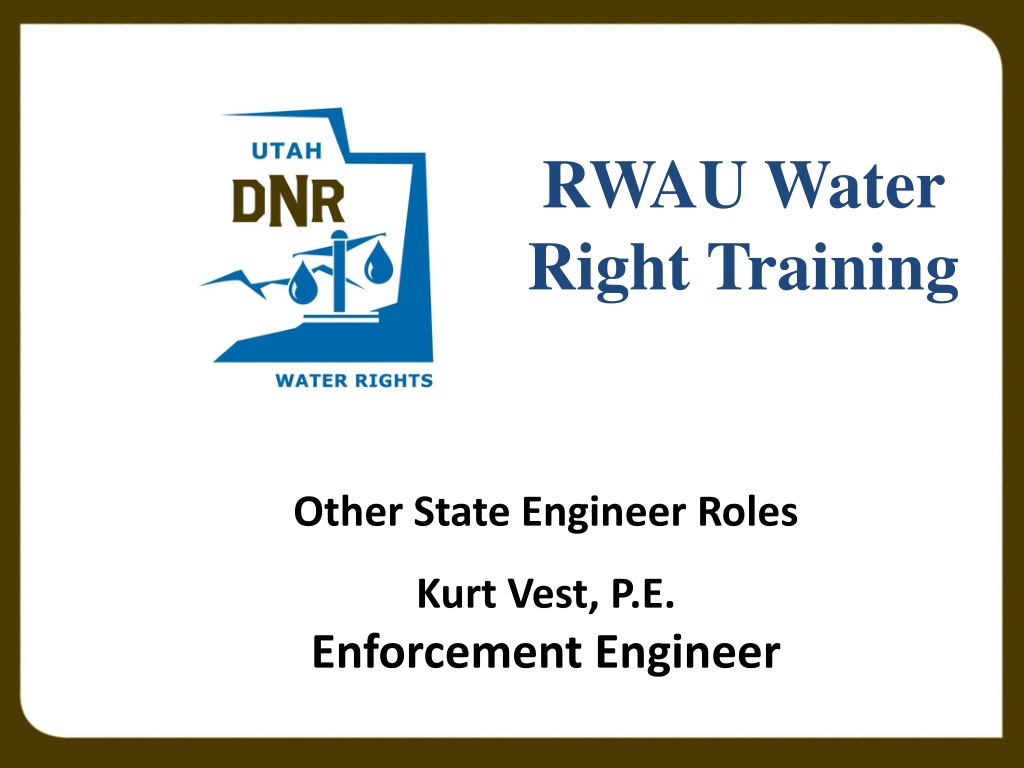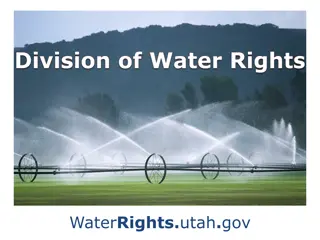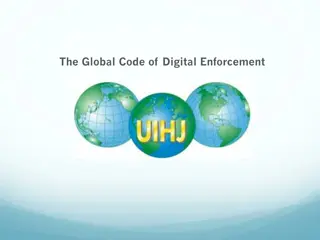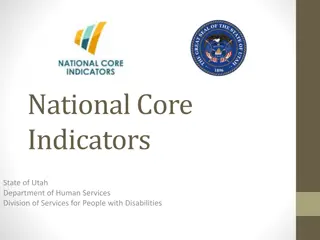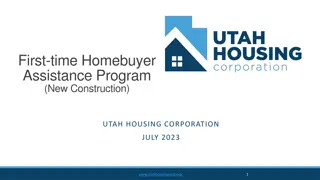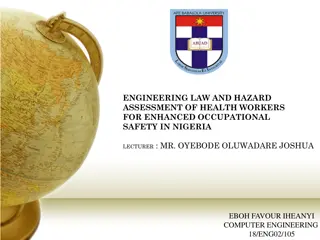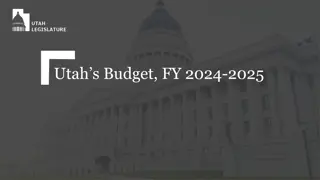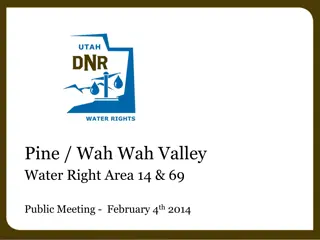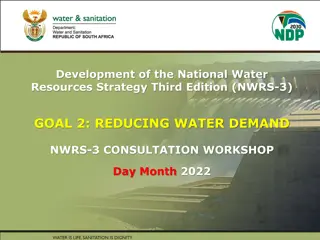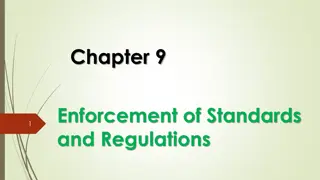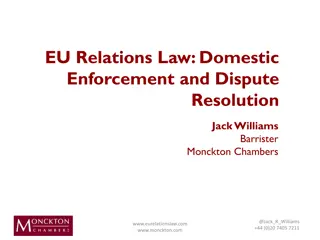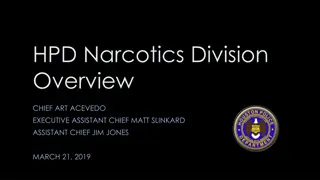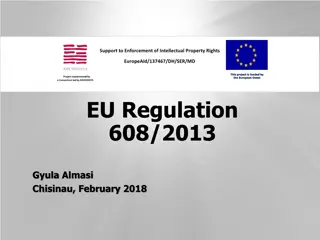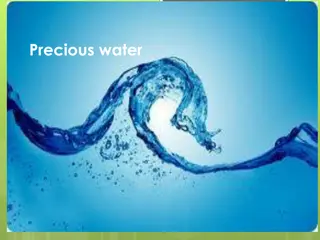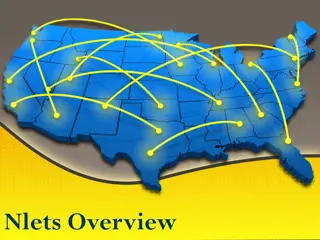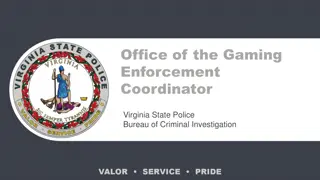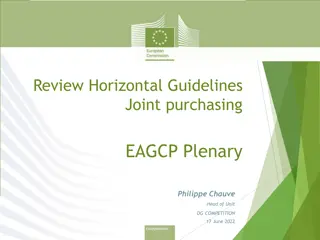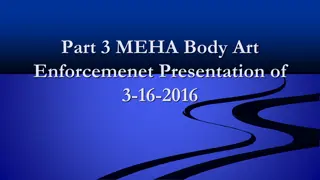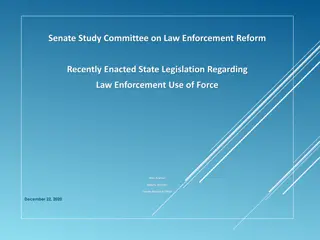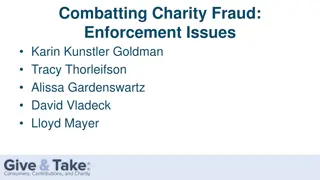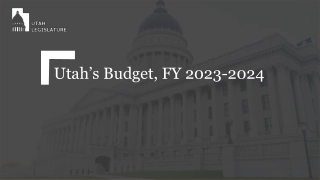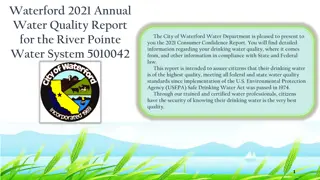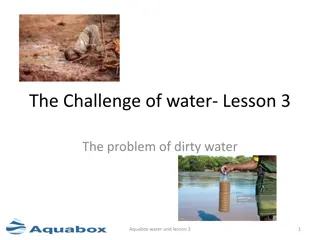Utah Division of Water Rights Enforcement Procedures Overview
Utah Division of Water Rights underwent changes in enforcement procedures in 2005, granting the State Engineer direct enforcement authority. The new statutes and rules outline powers for enforcement actions in cases of water violations, non-compliance with orders, and safety concerns. Enforcement actions can be initiated by issuing initial orders with details of violations, penalties, and consequences for non-compliance.
Download Presentation

Please find below an Image/Link to download the presentation.
The content on the website is provided AS IS for your information and personal use only. It may not be sold, licensed, or shared on other websites without obtaining consent from the author. Download presentation by click this link. If you encounter any issues during the download, it is possible that the publisher has removed the file from their server.
E N D
Presentation Transcript
Utah Division of Water Rights RWAU Water Right Training Other State Engineer Roles Kurt Vest, P.E. Enforcement Engineer June 21, 2004
History and Background Prior to 2005: State Engineer had no direct enforcement authority Persistent violations were addressed by: Criminal complaints when allowed by statute Civil litigation in pursuit of a court order Lacking civil litigation by injured parties, violators suffered no penalties
The 2005 Statutes Section 73-2-25: State Engineer enforcement powers Section 73-2-26: Administrative penalties Section 73-2-27: Criminal penalties Section 73-2-28: Cost and fees in civil actions The 2005 Administrative Rules Rule R655-14: Administrative Procedures for Enforcement Proceedings Before the Division of Water Rights
73-2-25: Powers When is an enforcement action authorized? Taking water without right or in violation of an existing right Failure to comply with statutes, orders or notices regarding headgates, measuring devices, etc.
73-2-25: Powers Failure to comply with an order or notice regarding dam safety or natural stream channel alteration
73-2-25: Powers When is an enforcement action not authorized: One year or more has passed since violation Civil disputes between or among water users Internal disputes in water or irrigation companies Right-of-way, easement or trespass disputes
To commence enforcement action SE issues an initial order, which includes: A description of the violation; Notice of any penalties to which person may be subject; and Notice that SE may treat each day s violation as a separate violation.
Final Order; the SE may order that person: Pay an administrative fine not to exceed: (A) $5,000 for each knowing violation; or (B) $1,000 for each violation that is not knowing; Replace up to 200% of water taken; and Be liable for any expenses incurred by the SE or Division in investigating and stopping the violation. Each day of a continuing violation is a separate violation. A penalty may not be imposed for a violation occurring more than 12 months before a NOV issued.
Before imposing a fine or ordering replacement the SE shall consider: The value or quantity of water unlawfully taken; The gravity of the violation, including the economic injury or impact to others; Whether the person subject to fine attempted to comply with the SE s orders; and The violator s economic benefit from the violation. R655-14. Administrative Procedures for Enforcement (25 pages single spaced)
Goal of Enforcement Program (My instructions) Resolve all 1st time offenses informally without having to resort to formal enforcement proceedings and/or levy any fines. If violation is egregious enough can still consider formal enforcement on 1st time offense. Any 2nd time offenses will result in commencement of an enforcement action.
Power of SE to regulate dams SE has authority to regulate dams for public safety SE may make rules controlling construction and operation of dams, including: Design; Maintenance; repair; Removal; and Abandonment. SE may exempt any dam that: Impounds less than 20 AF and if fails threatens no human life; or Does not threaten human life and if fails only minor damage to owners property.
Qualifications of persons designing dams Each plan for the construction, enlargement, repair, alteration, or removal of any dam shall be prepared by a qualified engineer who is: Licensed in Utah; and Experienced in dam design and construction. Written approval must be obtained from SE prior to commencing work.
Owners required to perform maintenance After inspection, SE specifies maintenance necessary for dam SE may issue orders for: Engineering studies; Repairs; Storage limitations; Removal of dam; Breaching of dam; or Any other remedy SE determines appropriate. Owner of dam responsible for maintenance.
Stream Alterations Natural Source To divert you need a water right To alter you need a state stream alteration permit Federal permission under clean water act (404 permit)
Relocate or Alter Natural Streams May not relocate any natural stream channel or alter beds and banks without first obtaining written approval of SE Fee based upon the entity applying for permit: Non-Commercial applicant .$100 Governmental applicant $500 Commercial applicant .$2000
Groundwater Recharge and Recovery
Groundwater Recharge and Recovery A person may not artificially recharge an aquifer without first obtaining a recharge permit. A person may not recover from an aquifer water that has been artificially recharged unless the person first obtains a recovery permit. A person proposing to artificially recharge water into an aquifer must have: A valid water right; or An agreement to use the water with a person who has a valid water right. A person who holds a recovery permit may recover the amount of water stored that remains within the hydrologic area of influence.
Application for a Recharge Permit o The name of the groundwater basin; o A legal description of the proposed recharge project; o The source and amount of water proposed to be recharged; o A valid water right for project; o Quality of water recharged and water quality of receiving aquifer; o Have applied for all applicable water quality permits; o A plan of operation which shall include: o Design capacity; o A detailed monitoring program; and o Proposed duration of the project.
Application for a Recharge Permit continued o Copy of a study demonstrating: o The area of hydrologic impact of project; o The recharge project is hydrologically feasible; o The recharge project will not: o Cause unreasonable harm to land; or o Impair any existing water right; and o The percentage of anticipated recoverable water; o Evidence of financial and technical capability. o A filing fee is submitted based on the amount of water proposed to be recharged.
Application for a Recovery Permit o May be filed with a recharge permit application; o Legal description of well(s) intended to recover water; o Name of groundwater aquifer which is the source of supply; o The purpose for which water will be recovered; o The depth and diameter of well(s); o A legal description of land where water will be used; o The designed pumping capacity of the well(s). o A filing fee must be submitted with the application - $2500
Storage account - Monitoring o The SE will establish a storage account for each groundwater recharge and recovery project; o Person holding a groundwater recharge or recovery permit shall: o Monitor the operation of the project and its impacts; and o File reports with the SE regarding: oThe Quantity of water stored and recovered; and oThe Water quality of the recharge water, receiving aquifer, and recovered water. o Annual fee assessed that covers Division s costs to administer.
Reuse by public agency owning WR o A public agency owning or operating a POTW that treats domestic wastewater consisting of water supplied under a WR the agency owns may use, or contract for the use of, reuse water if: o The WR is administered by the SE as a municipal WR; o The reuse is consistent with underlying WR; and o The public agency receives approval from Water Quality Board and SE
Reuse by public agency under contract o A public agency may use or contract for the use of reuse water if: o The domestic wastewater consists of water for which the agency has a reuse authorization contract; o The WR is administered by the SE as a municipal WR; o The reuse is consistent with underlying WR; and o The public agency receives approval from Water Quality Board and SE
Application to the State Engineer o A public agency proposing water reuse shall apply to the SE. o An application for water reuse shall include: o A description of the underlying WR; o An evaluation of the underlying WR s diversion, depletion, and return flow requirements; o The estimated quantity of water to be reused; and o An evaluation of depletion from hydrologic system caused by water reuse. o The SE shall conclude that reuse is consistent with WR if: o The use does not enlarge the underlying WR; and o Any return flow requirements of underlying WR is satisfied.
